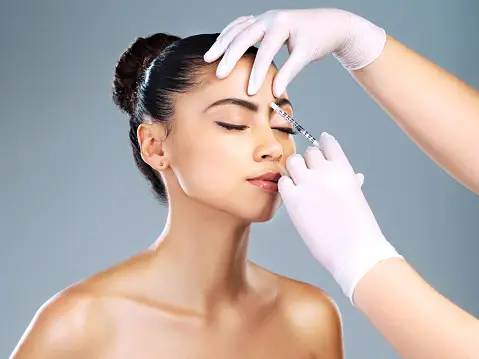Anti-wrinkle injections and Botox are related but not exactly the same thing. Botox is a brand name for a specific type of anti-wrinkle injection. The active ingredient in Botox is botulinum toxin, a neurotoxic protein produced by the bacterium Clostridium botulinum.
Botulinum toxin injections, commonly known as Botox injections, are used for various cosmetic and medical purposes, including reducing the appearance of wrinkles and fine lines. When injected into specific muscles, Botox temporarily paralyzes them, preventing the muscle contractions that cause wrinkles. This results in smoother, younger-looking skin.
While Botox is a well-known brand, there are also other brands of botulinum toxin injections available, such as Dysport and Xeomin. These products use a similar active ingredient and work in a similar manner to Botox.
Therefore, while anti-wrinkle injections may refer to any procedure that helps reduce wrinkles, Botox specifically refers to the use of botulinum toxin injections for this purpose.

What is better than Botox for wrinkles?
There is no definitive answer to what is “better” than Botox for treating wrinkles because the effectiveness of different treatments can vary depending on individual factors and preferences. However, there are alternative treatments available that can also help reduce the appearance of wrinkles. Here are a few options:
- Dermal Fillers: Dermal fillers, such as hyaluronic acid-based fillers (e.g., Juvederm, Restylane), are injectable substances used to add volume, plump the skin, and smooth out wrinkles. Unlike Botox, which relaxes muscles, dermal fillers physically fill in wrinkles and lines. They are commonly used for nasolabial folds, marionette lines, and adding volume to areas like the cheeks or lips.
- Laser Resurfacing: Laser treatments, such as fractional laser resurfacing, use laser energy to stimulate collagen production, which helps improve the texture and appearance of the skin. Laser resurfacing can target fine lines, wrinkles, and uneven skin tone. It can be an effective option for those who prefer non-invasive or non-surgical procedures.
- Chemical Peels: Chemical peels involve the application of a chemical solution to the skin, which causes controlled exfoliation and promotes the growth of new, healthier skin cells. Superficial to medium-depth peels can improve the appearance of fine lines, wrinkles, and uneven skin texture.
- Microdermabrasion: Microdermabrasion is a non-invasive procedure that uses a device to exfoliate the outermost layer of the skin, removing dead skin cells and stimulating cell turnover. It can help reduce the appearance of fine lines, mild wrinkles, and improve overall skin texture.
It’s important to consult with a qualified dermatologist or aesthetic professional who can assess your specific needs and recommend the most suitable treatment options for your wrinkles. They will consider factors such as the severity of your wrinkles, your desired outcomes, and your overall health before suggesting the most appropriate approach for you.
Are anti-wrinkle injections good?
Anti-wrinkle injections, such as Botox and other botulinum toxin-based treatments, can be effective for reducing the appearance of wrinkles and fine lines. They are widely used and have been in use for several years with a good safety record when administered by trained professionals.
Here are some benefits of anti-wrinkle injections:
- Smoothing of Wrinkles: Anti-wrinkle injections work by temporarily relaxing the muscles responsible for causing wrinkles. This helps to smooth out dynamic wrinkles, such as forehead lines, crow’s feet, and frown lines between the eyebrows. The result is a more youthful and refreshed appearance.
- Non-Surgical: Anti-wrinkle injections are non-surgical procedures. They involve a series of small injections directly into the targeted muscles or areas. This means there is no need for incisions, anesthesia, or downtime associated with surgery.
- Quick Procedure: The injections themselves usually take only a few minutes to complete. The procedure is typically well-tolerated and does not require a lengthy recovery period. Most individuals can resume their daily activities immediately after treatment.
- Temporary Results: One of the advantages of anti-wrinkle injections is that the results are temporary. The effects typically last for three to six months, depending on the individual and the specific product used. This allows flexibility and the option to adjust or discontinue treatment if desired.
However, it’s important to note that like any medical procedure, there can be potential risks and side effects associated with anti-wrinkle injections. These may include temporary redness, swelling, bruising, or slight asymmetry at the injection site. Rarely, more serious complications can occur if the injections are not administered correctly. Therefore, it’s crucial to seek treatment from a qualified and experienced medical professional who specializes in aesthetic procedures.
Ultimately, the decision to undergo anti-wrinkle injections should be made after consulting with a qualified healthcare provider who can evaluate your specific concerns, discuss the potential benefits and risks, and determine the most suitable treatment approach for you.
